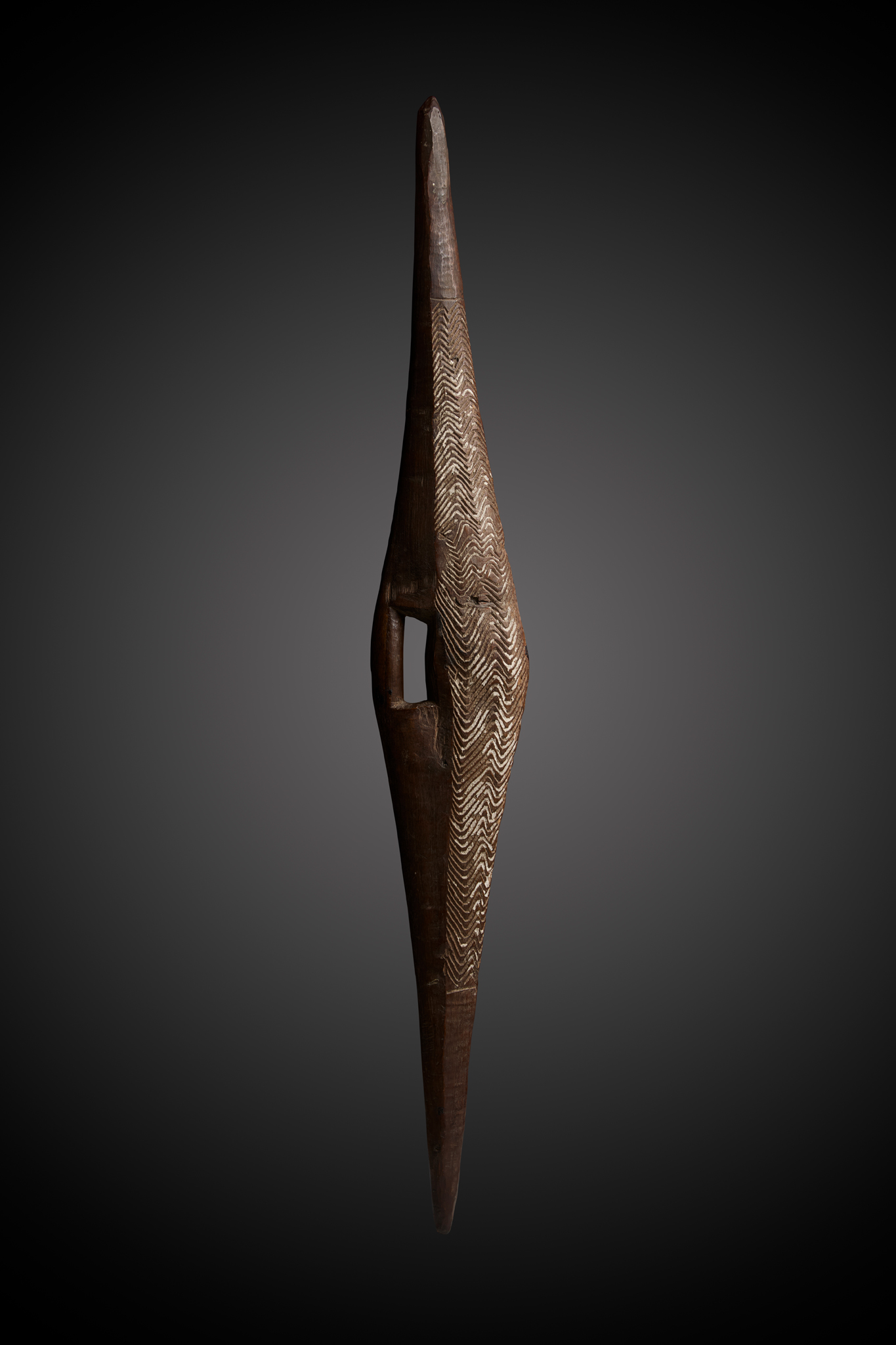ABORIGINAL PARRYING SHIELD, EARLY-MID 19TH CENTURY
VICTORIA AUSTRALIA
Estimate: £10,000 - £15,000
Auction: 13 March 2025 from 13:00 GMT
Description
carved hardwood, of triangular form, with an integral handle, the exterior adorned with zigzag motifs accentuated with white clay
Dimensions
93.4cm long
Provenance
Property from Penicuik House, Midlothian, acquired mid-19th century
Footnote
Artists from southeastern Australia traditionally crafted narrow and compact parrying shields, like the present example, which were employed in close combat to deflect blows from fighting clubs and other handheld weapons. These parrying shields were typically held by a handle positioned on the left side, with their narrow edge facing the opponent. Adorned with a series of engraved zigzag patterns, “a symphony of lines” (Jones, 2015, p. 74), these shields not only served a defensive function but were also rich in symbolic and cultural significance.
Beyond their use in combat, these shields acted as visual expressions of identity and tradition, with their engraved motifs and geometric patterns, reflecting the distinct artistic styles of the region’s communities. The intricate carving of these shields demanded exceptional craftsmanship, with artisans meticulously shaping the hardwood and etching traditional patterns using age-old techniques. This artistic process was both practical and symbolic, highlighting the inseparable link between utility and art. Although little historical information survives regarding the symbolic meaning of the designs, it is believed that they may represent emblems tied to the owner’s group or dreamings, ancestral beings whose actions shaped the landscape during the Dreaming, a primordial period of creation.
For a similar example collected in south-eastern Australia prior to 1839 please see: The British Museum, London, accession number Oc1839, 1012.3.

